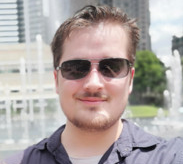*REGISTRATIONS REQUIRED* by Friday 12th April
Exploring the Triassic Oil Potential on the North West Shelf, Australia
Claudia Valenti (Carnarvon Petroleum)
The exploration history of the North West Shelf suggests that the Australian petroleum systems are predominantly gas prone, typically found beneath the mid-Cretaceous regional seal.
Carnarvon Petroleum regional and local seismic mapping, in conjunction with exploration drilling results, indicates that the Triassic has three oil prone petroleum systems, the Early, Middle and Late Triassic.
Fundamental to understanding the areas where these three petroleum systems will work is a thorough understanding of palaeogeographies, palaeoenvironments and stratigraphy. Carnarvon believes the petroleum systems have a distinct palaeogeographic distribution and are not ubiquitous source rock/reservoir horizons across the North West Shelf.
Various laboratory analysis, sedimentology, seismic mapping, seismic facies work have contributed to the identification of the most encouraging areas to explore.
Additionally, the proximity of the Triassic geology of the North West Shelf to SE Asia Triassic geology, with their similar depositional setting, prior to Gondwana break-up, adds credence to the proposed theories. Examples of the early, middle and late Triassic oil petroleum systems will be illustrated and identified in some of the major basins on the NW Shelf.
Groundwater Throughflow and Seawater Intrusion in High Quality Coastal Aquifers
Alex Costall (PhD Student - Curtin University)

This last year has taken me into the wonderful world of karstic aquifers, numerical groundwater flow - and solute transport - modelling. A ‘karst’ refers to terrain with distinctive structures formed from highly soluble rocks, such as limestone, dolomites, gypsums, etc. Exposure to flowing groundwater causes the rock matrix to dissolve, which can greatly affect the flow of groundwater. Caves, conduits, and fractures all present high-permeability pathways for groundwater to travel. Some of the highest quality coastal groundwater reserves around the world exist as extensive karstic aquifer systems. At coastal margins, the invisible and ever-looming seawater interface threatens fresh groundwater resources. As the changing climate affects groundwater recharge and growing world population continues to rely on these aquifers for drinkable groundwater, the risk of contamination has implications for millions of peoples worldwide.
Geophysical exploration methods offer unparalleled access to subsurface information, but it is not without flaws. Resistivity imaging is commonly used, but rarely with time-lapse investigation nor optimal acquisition/inversion strategy in mind. Numerical solute transport modelling has potential to aid our understanding, and define the limitations, of the both geophysical and conventional sampling methodology. Outcomes from this research aim to improve groundwater monitoring practices and numerical modelling outcomes with regard to the seawater interface. These outcomes will ultimately aid groundwater management decisions and help to preserve our fresh water resources for future generations.
Alex is a PhD student at Curtin University, Department of Exploration Geophysics, specializing in near-surface hydrogeophysical problems. He completed a Bachelor of Science (Geophysics) with first-class honours in 2014, and works part-time within the geophysics department as a research assistant and laboratory demonstrator. Alex’s research interests include groundwater and solute transport modelling, cooperative geophysical modelling, and exploration with ground penetrating radar and electrical resistivity.
Register your attendance by emailing wapresident@aseg.org.au.
